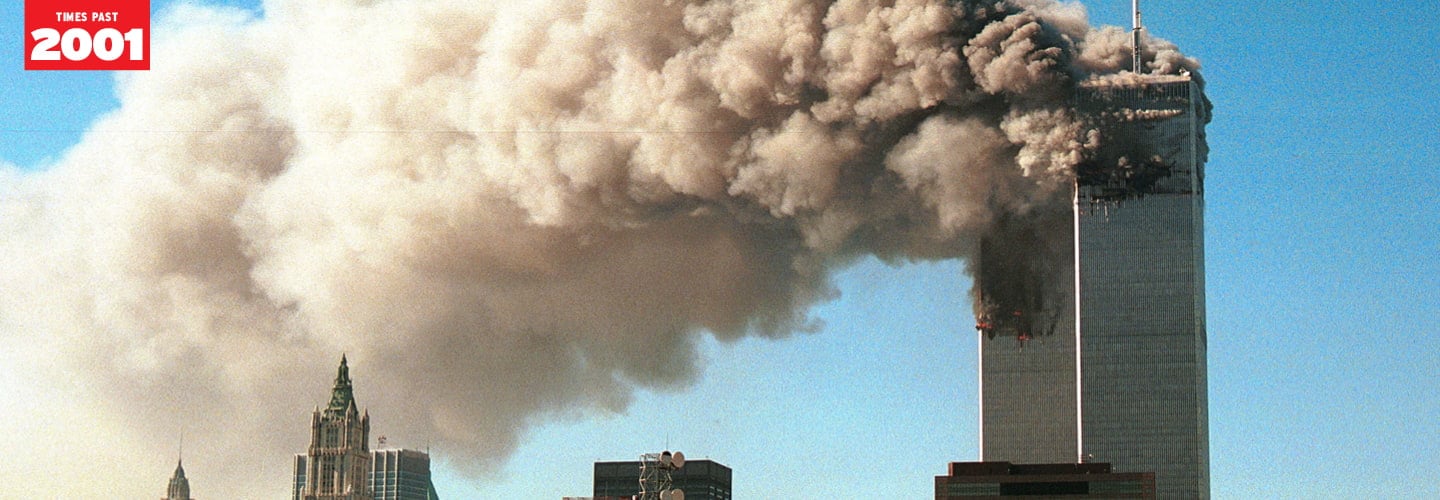Zach Gibson/Getty Images
Lila Nordstrom at a 2019 Congressional hearing for 9/11 victims
For Lila Nordstrom and her classmates at Stuyvesant High School in downtown Manhattan, the day began like a typical Tuesday. The senior was in architecture class learning to draw blueprints, on the 10th floor of the school. Out the window, she could see the 110-story Twin Towers of the World Trade Center just a few blocks away. Then, in a flash, Nordstrom’s life—and the world—changed forever.
“There was an earthquake-like rumble with a huge explosion sound,” Nordstrom, now 37, says. “And we turned around, and the entire top of the World Trade Center was a huge ball of fire.”
It was September 11, 2001. On that morning, 19 terrorists hijacked four American commercial jets and turned them into deadly airborne weapons. They flew two planes full of passengers into the Twin Towers, causing the iconic skyscrapers to catch fire and collapse with thousands of people trapped inside. About 30 minutes after the second plane hit, hijackers flew a plane en route from Virginia to Los Angeles into the Pentagon, outside Washington, D.C. And a fourth plane, immortalized as United flight 93, crashed shortly afterwards in rural Pennsylvania, brought down as passengers bravely tried to retake the cockpit. Authorities believe it was headed for the White House.
For Lila Nordstrom and her classmates at Stuyvesant High School in downtown Manhattan, the day began like a typical Tuesday. The senior was in architecture class learning to draw blueprints, on the 10th floor of the school. Out the window, she could see the 110-story Twin Towers of the World Trade Center just a few blocks away. Then, in a flash, Nordstrom’s life—and the world—changed forever.
“There was an earthquake-like rumble with a huge explosion sound,” Nordstrom, now 37, says. “And we turned around, and the entire top of the World Trade Center was a huge ball of fire.”
It was September 11, 2001. On that morning, 19 terrorists hijacked four American commercial jets and turned them into deadly airborne weapons. They flew two planes full of passengers into the Twin Towers. The collisions caused the iconic skyscrapers to catch fire. Both buildings then collapsed with thousands of people trapped inside. About 30 minutes after the second plane hit, hijackers flew another plane into the Pentagon, outside Washington, D.C. It was originally en route to Los Angeles from Virginia. And a fourth plane crashed shortly afterwards in rural Pennsylvania. That aircraft, immortalized as United flight 93, was brought down as passengers bravely tried to retake the cockpit. Authorities believe it was headed for the White House.

